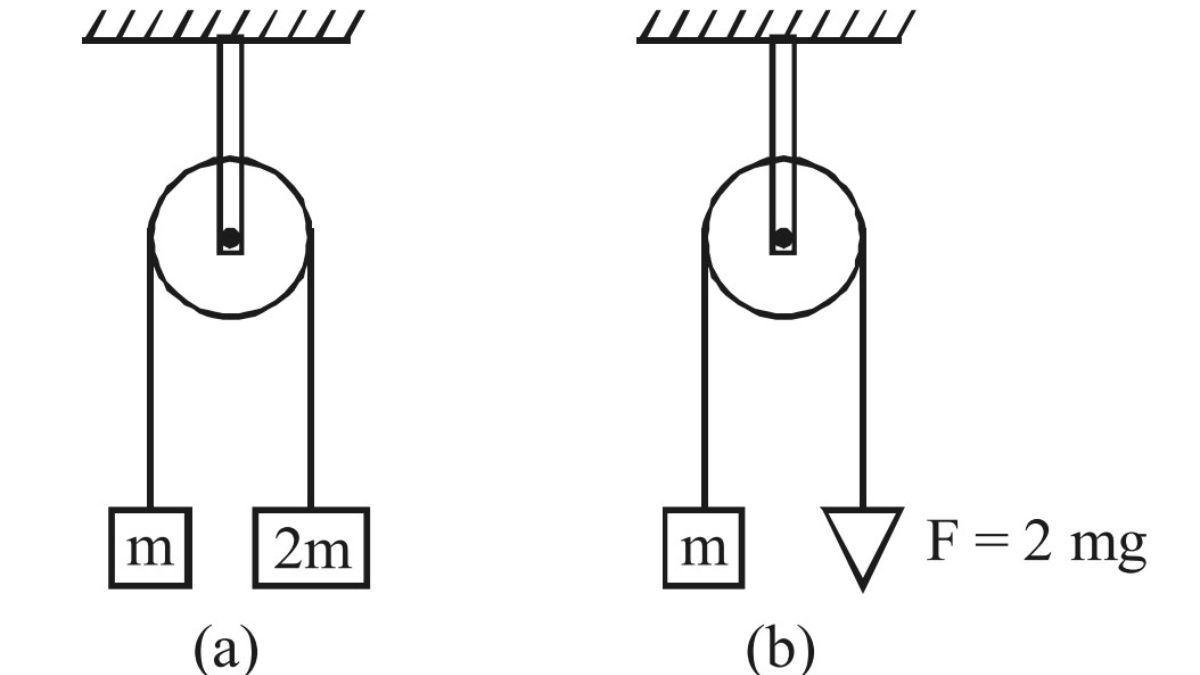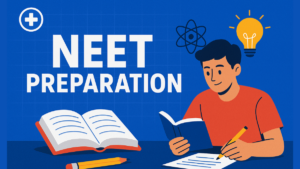Laws of Motion is a very important chapter while preparing for the NEET Exam, as listed in the NEET Syllabus 2026. The Newton’s Laws of Motion is a fundamental chapter in Class 11 Physics, which deals with several key concepts from mechanics. All the aspirants for the NEET Exam need to study well and try to solve all the concepts of the Laws of Motion chapter to complete their preparations for the entrance examination.
In this chapter, we have added the NEET Physics MCQs for Laws of Motion Chapter to provide aspirants with an overview of the types of questions being asked over the years. Scroll down in the article to get the year wise NEET Physics MCQs for Laws of Motion Chapter and fast-track your preparations.
NEET Physics MCQs for Laws of Motion Chapter
The Laws of Motion are crucial concepts for NEET aspirants to master. These multiple-choice questions are designed to test not only the theoretical knowledge but also the aspirant’s ability to apply these principles to various physical situations. Understanding these concepts thoroughly, along with solving numerous practice questions, will help them perform well in the NEET exam.
The Laws of Motion Chapter in the NEET Physics Syllabus 2026 enhances student’s knowledge and understanding about Newton’s Laws of Motion, Momentum, Friction, Tension, Pseudo Force, Circular Motion, etc.
Key Topics in Laws of Motion for NEET
Before diving into the MCQs, it is important to briefly review the key topics under the Laws of Motion:
- Newton’s First Law of Motion – Also known as the law of inertia, it states that an object at rest will stay at rest, and an object in motion will continue in motion with the same speed and in the same direction unless acted upon by an external force.
- Newton’s Second Law of Motion – This law establishes the relationship between force, mass, and acceleration. It is expressed mathematically as:
whereis the force applied,
is the mass of the object, and
is the acceleration.
- Newton’s Third Law of Motion – It states that for every action, there is an equal and opposite reaction. This principle explains various phenomena such as propulsion in rockets and the motion of objects due to forces acting in pairs.
- Friction – Friction is the force that opposes the relative motion of two surfaces in contact. It is a crucial concept in everyday mechanics, influencing the motion of objects.
- Inertia – Inertia is the property of an object that resists changes to its state of motion. It is directly related to an object’s mass.
- Applications of Newton’s Laws – The application of Newton’s Laws of Motion in real-life situations, such as vehicles in motion, free-fall, tension in ropes, and projectile motion.
Laws of Motion for NEET with Answers
In the article below, we have shared some of the most important NEET Physics MCQs for Laws of Motion Chapter so that all the students who are preparing for the NEET Exam can start preparing for the exam using them. Check the multiple choice questions here:
Question 1: Which of the following statements is an example of Newton’s first law of motion (law of inertia)?
a) A rocket moves forward in space due to the action of exhaust gases.
b) A car slows down when the brakes are applied.
c) A book stays at rest on a table unless pushed.
d) A stone falls to the ground due to the force of gravity.
Answer: c) A book stays at rest on a table unless pushed.
Explanation: Newton’s first law states that an object will remain at rest or move in a straight line unless acted upon by an external force. The book remains at rest on the table until an external force (a push) acts on it.
Question 2: The force required to accelerate a 5 kg object at
is:
a) 5 N
b) 15 N
c) 3 N
d) 8 N
Answer: b) 15 N
Explanation: Using the formula
, where
and
,
Question 3: If a person pushes a wall with a force of 10 N, the force exerted by the wall on the person will be:
a) 0 N
b) 5 N
c) 10 N
d) 20 N
Answer: c) 10 N
Explanation: According to Newton’s third law of motion, every action has an equal and opposite reaction. Hence, if a person applies a force of 10 N on the wall, the wall exerts an equal force of 10 N in the opposite direction on the person.
Question 4: The frictional force acting on an object is directly proportional to which of the following?
a) Velocity of the object
b) Normal force between the object and the surface
c) Mass of the object
d) Gravitational force acting on the object
Answer: b) Normal force between the object and the surface
Explanation: Friction is directly proportional to the normal force, which is the force perpendicular to the contact surface. The greater the normal force, the greater the frictional force.
Question 5: A body of mass 2 kg moves with an acceleration of
under the action of an external force. What is the inertia of the body?
a) 2 kg
b) 3 kg
c) 6 kg
d) Inertia is not related to mass
Answer: a) 2 kg
Explanation: Inertia is the resistance of an object to changes in its state of motion, and it is directly proportional to the object’s mass. Here, the inertia is 2 kg, which is the mass of the body.
Question 6: A person sitting in a car experiences a sudden jerk when the car accelerates. This is an example of:
a) Newton’s First Law
b) Newton’s Second Law
c) Newton’s Third Law
d) Conservation of Momentum
Answer: a) Newton’s First Law
Explanation: This is an example of inertia. According to Newton’s first law, the body of the person resists the change in motion caused by the acceleration of the car. The sudden jerk occurs because the person’s body tends to remain at rest while the car accelerates.
Question 7: Which of the following forces is not considered in the free-body diagram of a book resting on a horizontal surface?
a) Gravitational force
b) Normal force
c) Frictional force
d) Air resistance
Answer: d) Air resistance
Explanation: In a typical free-body diagram for a stationary book on a flat surface, the forces considered are the gravitational force, normal force, and possibly friction if the book is in motion or at the edge of moving. Air resistance is generally negligible unless the object is moving at high speed.
Question 8: A rope tied to a block of mass 5 kg is pulled with a force of 20 N. If the block is at rest and the rope is frictionless, the tension in the rope will be:
a) 0 N
b) 5 N
c) 20 N
d) 25 N
Answer: c) 20 N
Explanation: Since the block is at rest and there is no friction, the tension in the rope will exactly balance the applied force. Therefore, the tension will be 20 N.
Year Wise NEET Physics MCQs for Laws of Motion Chapter
In the table listed below, we have added the year wise NEET Physics MCQs for Laws of Motion Chapter so that all the students can start preparing accordingly. Click on the links below:
| Year Wise NEET Physics MCQs for Laws of Motion Chapter | |
| Year | Links |
| 2014 | Click Here |
| 2015 | Click Here |
| 2016 | Click Here |
| 2017 | Click Here |
| 2018 | Click Here |
| NEET Physics Chapters | MCQ Link |
|---|---|
| Physics and Measurement | Click Here |
| Kinematics | Click Here |
| Laws of Motion | Click Here |
| Work, Energy, and Power | Click Here |
| Rotational Motion | Click Here |
| Gravitation | Click Here |
| Properties of Solids and Liquids | Click Here |
| Thermodynamics | Click Here |
| Kinetic Theory of Gases | Click Here |
| Oscillation and Waves | Click Here |
| Electrostatics | Click Here |
| Current Electricity | Click Here |
| Magnetic Effects of Current and Magnetism | Click Here |
| Electromagnetic Induction and Alternating Currents | Click Here |










 NEET Preparation Strategy 2026: Detailed...
NEET Preparation Strategy 2026: Detailed...
 Free NEET Sample Papers 2026 PDF | Downl...
Free NEET Sample Papers 2026 PDF | Downl...
 Salt Analysis NEET Notes, Check Importan...
Salt Analysis NEET Notes, Check Importan...








